#Lucidota
Photo

Black Firefly
Lucidota atra
Lampyridae
Photograph taken on June 18, 2023, at Purdon Conservation Area, Lanark Highlands, Ontario, Canada.
#wildflowers of southern ontario#Black Firefly#firefly#insect#Lucidota atra#Lucidota#Lampyridae#Purdon Conservation Area#conservation area#lanark highlands#ontario#canada#nature
23 notes
·
View notes
Photo


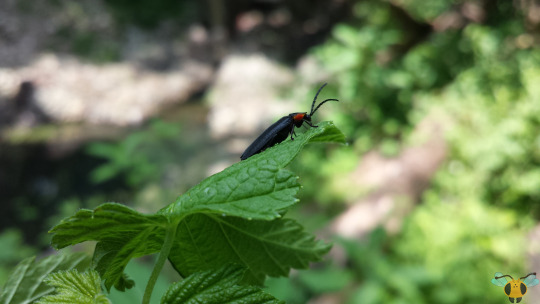


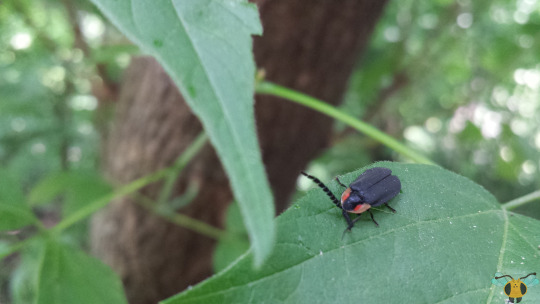

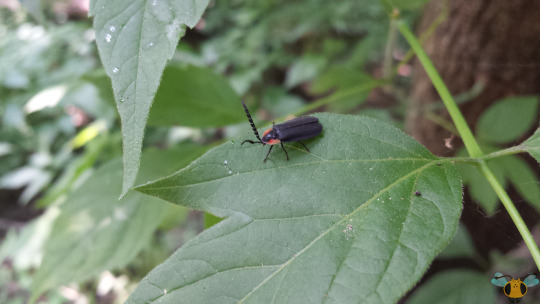
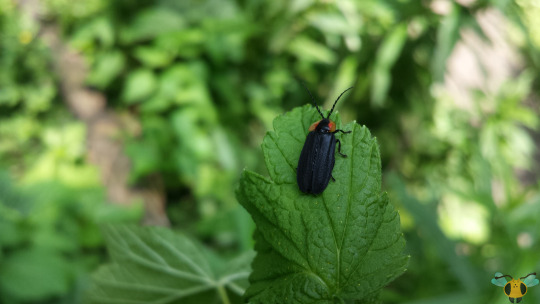
Black Firefly - Lucidota atra
Here we find the rest of the images captured from the daytime flying Fireflies of the managed wilderness. Researching this specie a little more, it’s become apparent that neither males nor females can actively use bioluminescence upon reaching their adult form. Compared to other varieties of Firefly whose entire rear abdominal segments function as light generation, this specie’s light organs are substantially reduced. They are reported to appear as miniscule yellow spots on the abdomen’s last plate (for females) or two plates (for males). With adequate magnification equipment, you’d be hard pressed to discover them. As a shorthand to tell males and females apart, the Black Firefly males tend to have larger, more developed antennae (likely with more prominent serrations too). Think about it in a similar fashion to how some adult Moth males have feathered antennae to increase their detection abilities. This antennae difference may be necessary since without light to signal and communicate to potential mates, males will need to register and follow pheromone cues from females in order to find them.
It’s also fortunate that these Fireflies have good sized eyes (relatively speaking) to aid in their search. Other Fireflies of similar stature may have reduced eyes, which creates a greater reliance on pheromone trails for meeting other Fireflies. Perhaps this variety of Beetle can have the best of both worlds without the need to use light as a communication method. However, it’s not all doom and darkness for this Lampyrid: the larvae are actually bioluminescent! While they resemble smaller, more narrow Trilobite Beetles (at least, in terms of the frontal plates), these young grubs can actually generate light from their rear! Moreover, their bioluminescent flashing can be performed until just after they emerge from their pupa (as demonstrated from reared specimens)! It’s somewhat disappointing that the adults lose their light function, but in this case it may be due to a dramatic change in energy intake and requirements. Larvae don’t need to worry about flight or mating and they eat snails, soft-bodied insects and worms, all protein rich and full of energy! L. atra adults however subsist on pollen and nectar. All their gathered nutrients and stores may have just been to grant the Beetle’s final molt armor, genitals, wings and the wingcase. Do not think less of them, for you can actually actually find them during the day.
Pictures were taken on July 10, 2019 in High Park with a Samsung Galaxy S4.
#jonny’s insect catalogue#ontario insect#beetle#black firefly#firefly#coleoptera#insect#high park#toronto#july2019#2019#entomology#nature#invertebrates
6 notes
·
View notes
Text
Back on my hyperfixation shenanigans so I have not slept and here's a list of what I consider to be the prettiest beetles, butterflies and moths, damselflies, and grasshoppers and crickets that inhabit Colorado and Kentucky according to insectidentification.org :
COLORADO
Emerald ash borer (Agrilus planipennis)
Fifteen-spotted lady beetle (Anatis labiculata)
Golden tortoise beetle (Charidotella sexpunctata)
Knapweed root weevil (Cyphocleonus achates)
Longhorn beetle (Semanotus amethystinus)
Dogbane Leaf Beetle (Chrysochus auratus)
European Ground Beetle (Carabus nemoralis)
Golden Net-wing Beetle (Dictyoptera aurora)?
Margined Blister Beetle (Epicauta funebris)
May Beetle - P. lanceolata (Phyllophaga lanceolata)
Mottled Tortoise Beetle (Deloyala guttata)
Pleasing Fungus Beetle (Gibbifer californicus)
Poplar Borer Beetle (Saperda calcarata)
Shining Leaf Chafer - Anomala spp. (Anomala spp.)
Signate Lady Beetle (Hyperaspis signata)
American Lappet Moth (Phyllodesma americana)
Cinnabar Moth (Tyria jacobaeae)
Common Checkered-Skipper (Pyrgus communis)
Glover's Silkmoth (Hyalophora columbia gloveri)
Great Ash Sphinx Moth (Sphinx chersis)
Autumn Meadowhawk (Sympetrum vicinum)
Black Saddlebags Skimmer (Tramea lacerata)
Bird Grasshopper (Schistocerca spp.)
Obscure Bird Grasshopper (Schistocerca obscura)
Sooty Longwing Katydid (Capnobotes fulginosus)
KENTUCKY
Andrew's Snail-eating Beetle (Scaphinotus andrewsii)
Black Firefly (Lucidota atra)
Calligrapha Beetle (Calligrapha spp)
Eastern Hercules Beetle (Dynastes tityus)
Emerald Euphoria Beetle (Euphoria fulgida)
Glowworm (Phengodes spp.)
Goldsmith Beetle (Cotalpa lanigera)
Metallic Wood-boring Beetle: Chalcophora (Chalcophora fortis)
Notched-mouth Ground Beetle (Dicaelus purpuratus)
One-spotted Tiger Beetle (Apterodela unipuncata)
Rainbow Darkling Beetle (Tarpela micans)
Rainbow Scarab Beetle (Phanaeus vindex)
Six-spotted Tiger Beetle (Cicindela sexguttata)
Southern Sculptured Pine Borer Beetle (Chalcophora georgiana)
Stag Beetle (Lucanus capreolus)
Twice-stabbed Lady Beetle (Chilocorus stigma)
Vietinghoff's Ground Beetle (Carabus vietinghoffii)
Abbott's Sphinx Moth (Sphecodina abbottii)
American Ermine Moth (Yponomeuta multipunctella)
Arched Hooktip (Drepana arcuata)
American Bird's-Wing Moth (Dypterygia rozmani)
Arcigera Flower Moth (Schinia arcigera)
Attentive Crocus Moth (Xanthotype attenuaria)
Basswood Leafroller (Pantographa limata)
Beautiful Wood-Nymph (Eudryas grata)
Black-waved Flannel Moth (Megalopyge crispata)
Blackberry Looper (Chlorochlamys chloroleucaria
Blinded Sphinx Moth (Paonias excaecata)
Bluish Spring Moth (Lomographa semiclarata
Buck Moth (Hemileuca maia)
Carmine Snout Moth (Peoria approximella)
Carrot Seed Moth (Sitochroa palealis)
Cecropia Silk Moth (Hyalophora cecropia)
Changeable Grass-Veneer (Fissicrambus mutabilis)
Colorful Zale (Zale minerea)
Common Lytrosis Moth (Lytrosis unitaria)
Confused Eusarca (Eusarca confusaria)
Cross-lined Wave (Timandra amaturaria)
Curve-toothed Geometer (Eutrapela clemataria)
Dark-banded Geometer (Ecliptopera atricolorata)
Deep Yellow Euchlaena (Euchlaena amoenaria)
Diaphania costata (Diaphania costata
Dimorphic Macalla (Epipaschia superatalis)
Dot-lined White (Artace cribrarius)
Dotted Gray (Glena cribrataria)
Drab Prominent (Misogada unicolor)
Eight-spotted Forester Moth (Alypia octomaculata)
Elder Shoot Borer (Achatodes zeae)
Explicit Arches (Lacinipolia explicata)
Eyed Paectes Moth (Paectes oculatrix)
Falcate Orangetip (Anthocharis midea) (female)
Fall Webworm (Hyphantria cunea)
False Crocus Geometer (Xanthotype urticaria
Fervid Plagodis (Plagodis fervidaria)
Fig Sphinx (Pachylia ficus)
Friendly Probole Moth (Probole amicaria)
Giant Leopard Moth (Hypercompe scribonia)
Goldcap Moss-eater Moth (Epimartyria auricrinella)
Gray-edged Hypena (Hypena madefactalis)
Green Arches (Anaplectoides prasina)
Hag Moth (Phobetron pithecium
Hibiscus Leaf Caterpillar Moth (Rusicada privata)
Imperial Moth (Eacles imperialis)
Lesser Maple Spanworm Moth (Speranza pustularia
Luna Moth (Actias luna)
Melissa Blue Butterfly (Plebejus melissa spp.)
Modest Sphinx Moth (Pachysphinx modesta)
Morbid Owlet Moth (Chytolita morbidalis)
Orange-patched Smoky Moth (Pyromorpha dimidiata)
Pale Beauty (Campaea perlata)
Pale Lichen Moth (Crambidia pallida)
Pale Metarranthis (Metarranthis indeclinata)
Pandorus Sphinx Moth (Eumorpha pandorus)
Parthenice Tiger Moth (Apantesis parthenice)
Pearly Wood-Nymph Moth (Eudryas unio)
Pero Moth (Pero spp.)
Pink-patched Looper (Eosphoropteryx thyatyroides)
Pipevine Swallowtail (Battus philenor)
Pistachio Emerald Moth (Hethemia pistasciaria)
Plebeian Sphinx Moth (Paratrea plebeja) (Caterpillar)
Primrose Moth (Schinia florida)
Promiscuous Angle Moth (Macaria promiscuata)
Raspberry Pyrausta (Pyrausta signatalis)
Rustic Sphinx Moth (Manduca rustica)
Saddleback Caterpillar Moth (Acharia stimulea)
Saddled Yellowhorn (Colocasia flavicornis)
Salt-and-pepper Looper Moth (Syngrapha rectangula)
Satin Moth (Leucoma salicis)
Scarlet-winged Lichen Moth (Hypoprepia miniata)
Schlaeger's Fruitworm Moth (Antaeotricha schlaegeri)
Showy Emerald Moth (Dichorda iridaria)
Small Bird Dropping Moth (Ponometia erastrioides)
Snowy Urola (Urola nivalis)
Sorghum Webworm Moth (Nola cereella)
Southern Flannel Moth (Megalopyge opercularis)
Southern Longhorn Moth (Adela caeruleella)
Southern Pine Sphinx (Lapara coniferarum)
Southern Tussock Moth (Dasychira meridionalis)
The Badwing (Dyspteris abortivaria)
Unspotted Looper Moth (Allagrapha aerea)
Venerable Dart Moth (Agrotis venerabilis
Vine Sphinx Moth (Eumorpha vitis)
Walnut Sphinx Moth (Amorpha juglandis)
Wavy-lined Emerald Moth (Synchlora aerata)
Western Grapeleaf Skeletonizer Moth (Harrisina metallica)
White Flannel Moth (Norape ovina)
White Slant-line Moth (Tetracis cachexiata)
White-fringed Emerald Moth (Nemoria mimosaria)
Yucca Moth (Tegeticula, Greya, and Prodoxus spp.)
Carolina Locust (Dissosteira carolina)
Eastern Shieldback Katydid (Atlanticus spp.)
Slender Meadow Katydid (Conocephalus fasciatus)
True Katydid (Pterophylla camellifolia)
Ebony Jewelwing (Calopteryx maculata)
Midland Clubtail (Gomphurus fraternus)
Red Saddlebags (Tramea onusta)
Seepage Dancer (Argia bipunctulata)
5 notes
·
View notes
Text
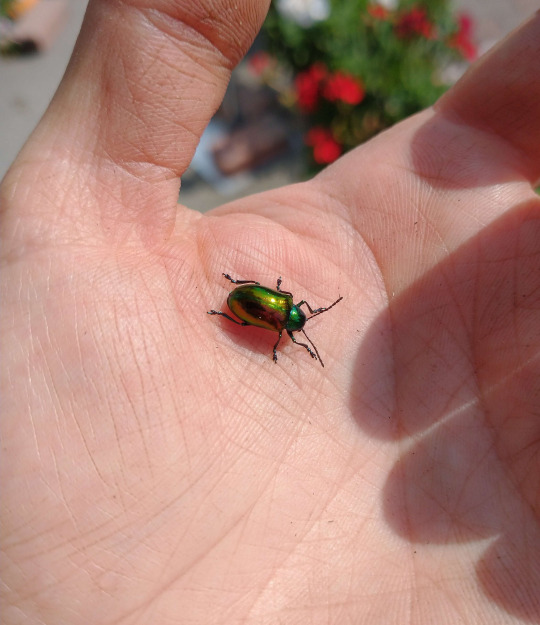

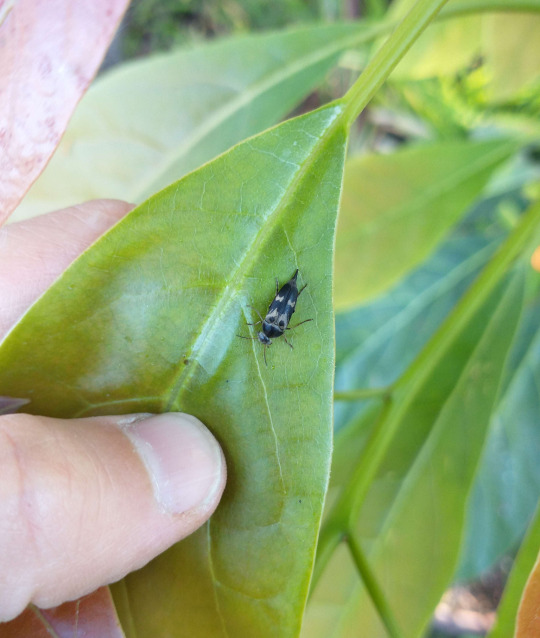

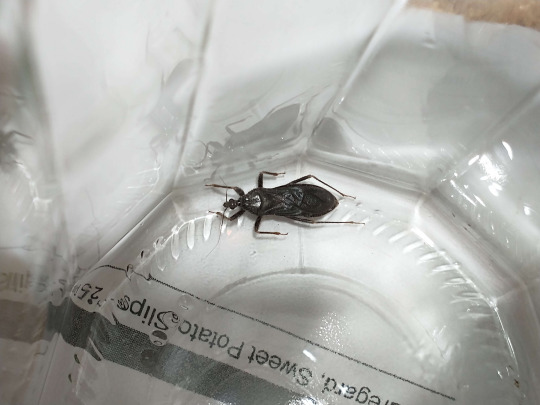
the week in bugs! well. mostly beetles and one true bug. who was in my bathroom sink. rude.
dogbane beetle (Chrysochus auratus), black firefly (Lucidota atra), flower beetle (Glipa oculata), some kind of big june bug with the cutest :3 face, and masked hunter (Reduvius personatus). true bugs like to be bitey so that one got the cup and cardboard express route outside.
#insects#bugs#(general catch-all tag)#it is important to keep a spare cup and cover in the bathroom for Surprise Sink Creatures
3 notes
·
View notes
Text


Black Firefly, Lucidota atra
6 notes
·
View notes
Photo
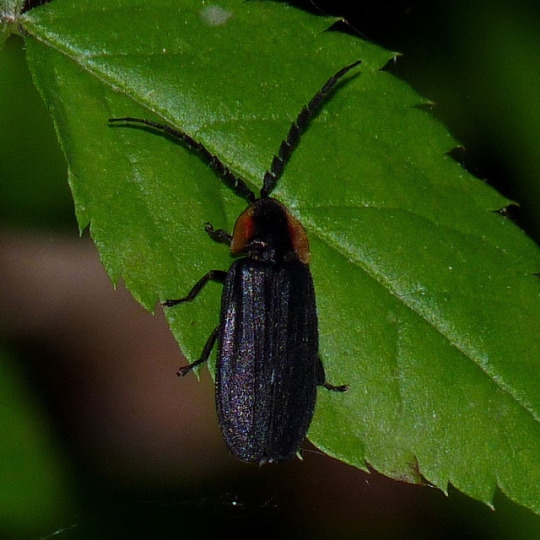
Black Firefly, Lucidota atra (by me)
#Black Firefly#Lucidota atra#Lucidota#Lucidotini#Lampyrinae#Lampyridae#Elateroidea#Elateriformia#Polyphaga#Coleoptera#Insecta#Hexapoda#Arthropoda#firefly#insects#spring#Negri-Nepote Native Grassland Preserve#Somerset County#New Jersey#mine
11 notes
·
View notes
Text
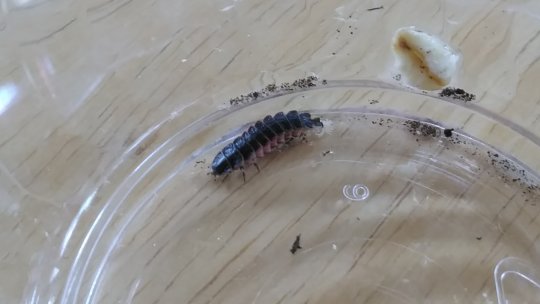
Sorry, I've been sending a lot of pics recently, but I haven't been able to ID this fella on my own. I really like how the coloring on the underside kinda goes from pink to white, as well as the odd fibrous thing on their back end. It kinda gets sucked up when they move but comes back out once they're done? found New England USA.
It’s a firefly larva! Likely Lucidota atra, the black firefly. I’m afraid I don’t know enough about them to know what’s coming out its back end, though. Anyone else know? Reminds me of hair pencils or coremata on moths!
50 notes
·
View notes
Text
Fourth of July and the Firefly

Although many fireworks shows are cancelled this Fourth of July, this is a great opportunity to get out over the holiday weekend and enjoy nature’s very own light show during World Firefly Day, on July 4th and 5th!
Fireflies, AKA lightning bugs, are neither flies nor bugs. They are actually a type of beetle with soft wings and the ability to bioluminesce (light up).
There’s a good chance you will see (or have already started seeing) firefly light displays this summer. There are six genera of fireflies that you are likely to encounter in Pennsylvania. Three are diurnal and don’t light up as adults (Ellychnia, Pyropyga, and Lucidota). Their light organs are absent or reduced in the adult stage. The remaining three genera are nocturnal and use light displays as adults. One is Pyractomena, which is a spring-active firefly that has already finished displaying for the year. That leaves Photinus and Photuris as the hosts of nature’s fireworks this Fourth of July. If you pay close attention to the flash patterns you’re seeing in your yard or get a chance to see one up close, you’ll probably be able to tell which one it is!
Photinus fireflies (top) are flattened in appearance and their heads are usually concealed from above, whereas Photuris fireflies (bottom) are hump-backed and you can often see their heads from above.


Creative Commons © David Cappaert, Bugwood.org
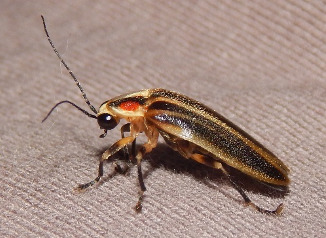
Photo credit: Andrea Kautz
Flash patterns vary by species, as do the timing and location of the display. Some species display low to the ground, while others display high in trees. Some are active at dusk, and others after dark. The most common firefly in the eastern U.S. is Photinus pyralis which has a lazy J-shaped flash pattern. Other flash patterns you may have seen are single or multiple rapid blinks. The displays you see are male fireflies advertising to females, who respond inconspicuously with their own flash pattern from a lower perched position. Some “femme fatales” in the genus Photuris will actually hunt by flashing in response to males of other species to lure them in, and then eat them!
Speaking of hunting, firefly larvae (below) are predators that live in moist soils, feeding on slugs and snails, which is a great method of pest control! Adults of some species are predators, but others drink nectar from flowers or simply do not eat at all.

Creative Commons © 2019 Ken Childs
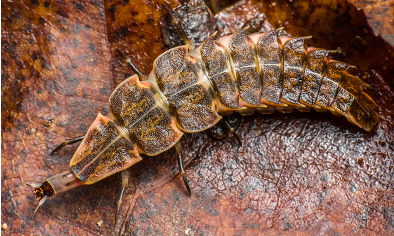
Creative Commons © 2012 Derek Hauffe
The light-producing behavior has its origins in the larvae, which use the glow as a warning to predators that they are toxic. Other animals use bright colors to achieve this, but this wouldn’t be effective for nocturnal species in darkness. Adult fireflies light up to warn predators, but also to communicate with members of their own species, specifically potential mates. The distress signal is different from the mating signal, which you may notice if you capture a firefly in your hand and it starts to blink repeatedly.
We hope you get a chance to celebrate both the Fourth of July and World Firefly Day this year by witnessing some natural firework displays in your own back yard! We encourage you to share your experiences on the Fireflyers International Network Facebook page.
Andrea Kautz is a Research Entomologist at Carnegie Museum of Natural History’s Powdermill Nature Reserve. Museum employees are encouraged to blog about their unique experiences and knowledge gained from working at the museum.
#Carnegie Museum of Natural History#Firefly#World Firefly Day#Bugs#Lightning bugs#Beetles#bioluminescence
23 notes
·
View notes
Photo

The Occurrence and Behaviors of North American Fireflies (Coleoptera: Lampyridae) on Milkweed, Asclepias syriaca L.
Lynn Faust and Hugh Faust
At four sites spanning a general triangle with 50–100 km legs in East Tennessee over a six-week period in July and August 2013, 56 fireflies, male and female, from four species and three genera were associated with common milkweed, Asclepias syriaca L. Photinus pyralis (L.), Photinus cooki Green, Pyropyga minuta LeConte, and an determined species of Photuris Dejean repeatedly exhibited seven common behaviors of nectaring from individual blooms and stigmatic slits and actively mouthing floral stems, recurved sepals, and uppermost leaves, lasting from 9–175 minutes.
Milkweed pollinia were noted on three of the four species. Maximum firefly presence was observed the first two survey days, 7 and 8 July, falling to low but persistent numbers the remainder of the survey. These firefly behaviors were observed primarily in the four hours before sunset and after sunrise.
Twelve Photuris larvae were observed feeding on milkweed rhizomes in captivity. Reports of milkweed-firefly associations involving at least four additional firefly species in two additional genera, Lucidota atra (Olivier), Photinus indictus (LeConte), Pyropyga decipiens (Harris) and a species of Pyractomena Melsheimer spanning 90 years across the eastern US are presented along with recent reports of similar behaviors witnessed from Texas to Canada.
via: https://bioone.org/journals/The-Coleopterists-Bulletin/volume-68/issue-2/0010-065X-68.2.283/The-Occurrence-and-Behaviors-of-North-American-Fireflies-Coleoptera/10.1649/0010-065X-68.2.283.short?fbclid=IwAR0YlEE1D9BKwl7zG9p_bpSlYcigf8p84btPGVKQAdArxue1dGawUAJJGj0
#entomology#insect#pollinators#beetle#firefly#nature#ecology#science#north america#plants#botany#milkweed#flowers#wildflowers
10 notes
·
View notes
Photo

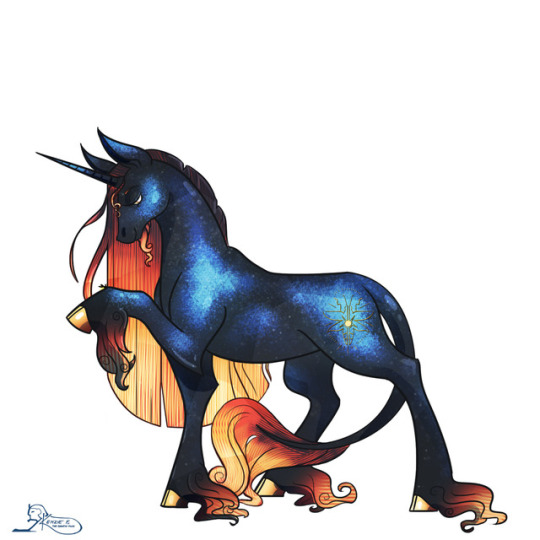

My half of a design trade with @kajeaynart !
I had a ton of fun with her design, as well as some pretty experimental accessories. Since the theme was fireflies, I gave her a bunch of cool jars and a sort of greenhouse-ish thing that she carries around. She’s basically a firefly sanctuary on hooves and is incredibly gentle and graceful thanks to having to deal with the cute tiny buggers. I imagine she’s sort of a wanderer and loves festivals where she can sell pretty floating light fixtures, enchanted to make it look as if there are fireflies buzzing around inside. As for a name, I’m partial to Lucidota~
I hope you like her!
40 notes
·
View notes
Photo
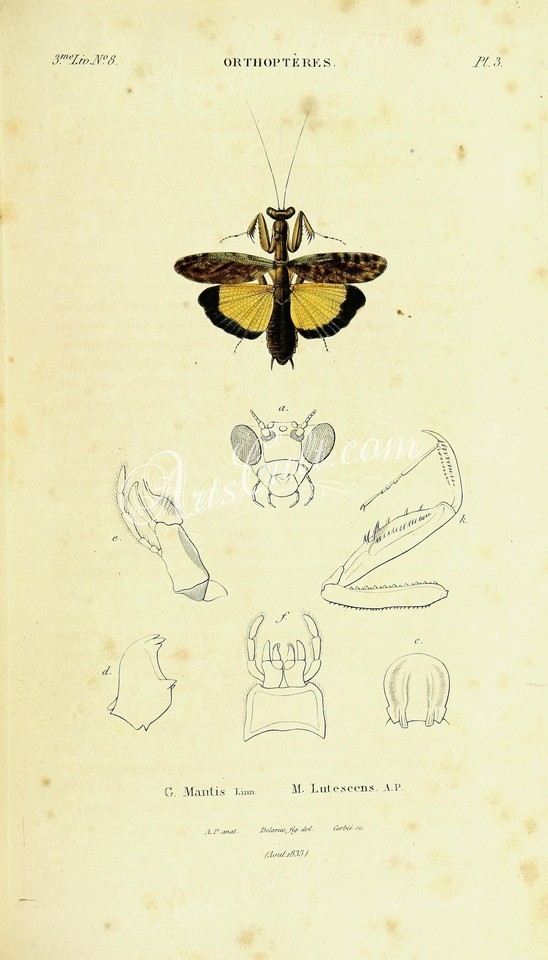
152-lamprocera, lucidota, vesta, megalophthalmus, amydetes, phengodes, scyrtes - high resolution image from old book.
0 notes
Photo

Black Firefly, Lucidota atra (by me)
#Black Firefly#Lucidota atra#Lucidota#Lucidotini#Lampyrinae#Lampyridae#Elateroidea#Elateriformia#Polyphaga#Coleoptera#Insecta#Hexapoda#Arthropoda#firefly#insects#beetle#summer#Thompson Park Conservation Area#Monroe Township#Middlesex County#New Jersey#mine
7 notes
·
View notes
Photo
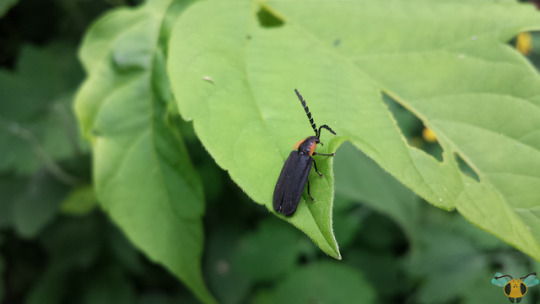

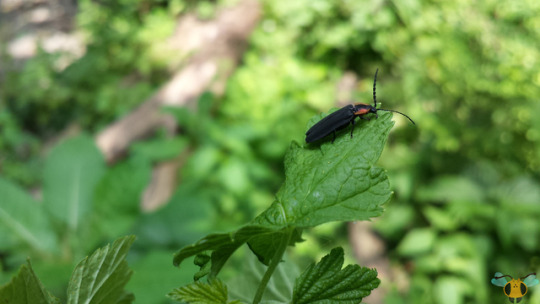
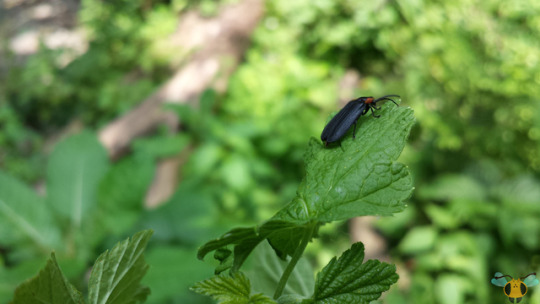
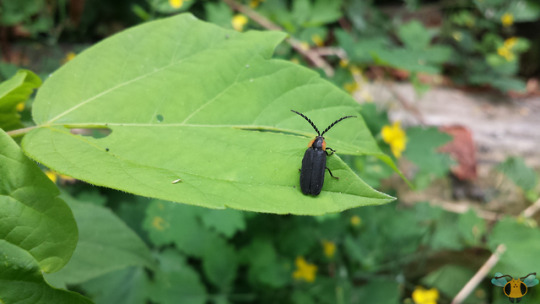
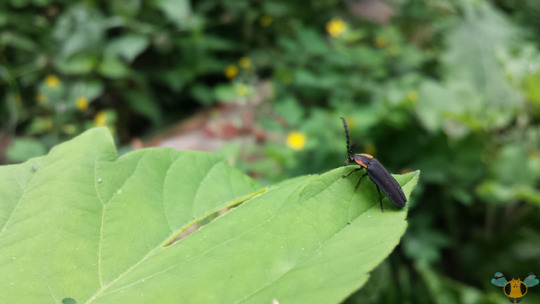
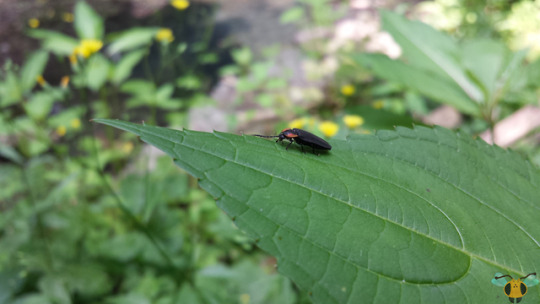
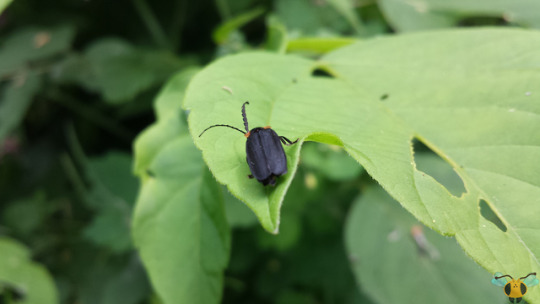
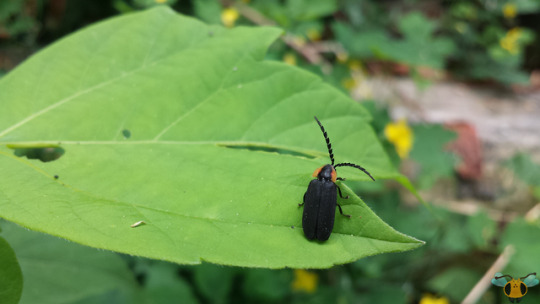

Black Firefly - Lucidota atra
During my latest High Park trip, I was amazed to see this Beetle specie, and not just one individual. There were dozens of individuals crawling and flying around the park, most of them near rotting wood or a small water source like a stream, sharing the latter with the likes of Crane Flies, Dance Flies and Bumblebee Flies. Didn’t see any near Grenadier Pond, though I suppose the Dragonflies and Damselflies have that area well patrolled as is! The shadows of the trees and leaves are the friends of this Beetle, particularly since it belongs to a family (Lampyridae) of insects with a particular “enlightening” feature which gives them their name. Fireflies (in general) have specialized segments at the end of their abdomen which they use to generate light. This phenomenon is one of the commonly known examples of bioluminescence, or light produced by a living thing.
Different species produce different colors of light ranging from orange to yellow to green. One specie can actually produce light that appears blue (actually a shade of green) and is aptly named the Blue Ghost Firefly (Phausis reticulata). The primary use of this light is to signal for mates, but the light can also be used for defense; firefly larvae generate unpleasant chemicals leaving them rather distasteful so they flash to warn potential predators. Those nasty chemicals are retained even in their adult life; this one can excrete toxins from its legs if its threatened. Sadly, aside from that, this Firefly specie doesn’t have it so exciting as other species. As a daytime flying Firefly, it relies less on its glowing behind and more on chemical signals to find mates, to the point where males cannot produce light. Females do not seem to be able to produce light either, so I’ll need to carefully examine the light generating patches on the abdomens of future finds. Perhaps there’s a possibility that 2-way communication is available... maybe.
Pictures were taken on July 10, 2019 in High Park with a Samsung Galaxy S4
#jonny’s insect catalogue#ontario insect#beetle#black firefly#firefly#coleoptera#insect#july2019#2019#high park#toronto#entomology#nature#invertebrates
0 notes